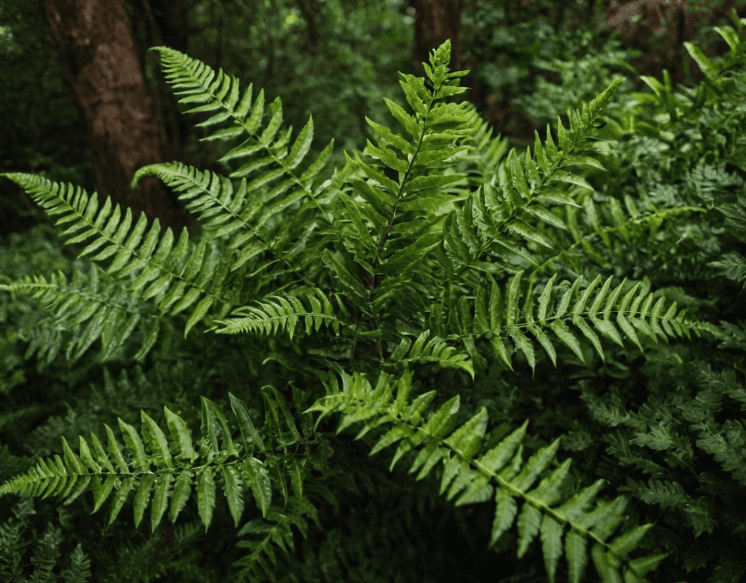
The East Indian Holly Fern, scientifically known as Arachniodes simplicior variegata, is an exotic and beautiful addition to any garden or indoor plant collection. With its striking variegated foliage, this fern stands out and adds a touch of elegance to its surroundings. This article delves into the detailed care, growth habits, and propagation techniques for the East Indian Holly Fern.
The East Indian Holly Fern, also known as Arachniodes simplicior or Indian Holly Fern, thrives in well-drained soil and prefers a shady environment, making it perfect for indoor settings and shaded garden areas. This fern’s unique appearance, with its dark green fronds accented by a lighter green or yellow midrib, makes it a popular choice among plant enthusiasts.
Bio Data and Personal Information
| Aspect | Details |
|---|---|
| Scientific Name | Arachniodes simplicior variegata |
| Common Names | East Indian Holly Fern, Indian Holly Fern, Variegated Holly Fern |
| Family | Dryopteridaceae |
| Native Region | East Asia, including Japan and China |
| Light Requirements | Partial to full shade |
| Watering Needs | Moderate, prefers moist soil |
| Soil Type | Well-drained, rich in organic matter |
| Humidity | Prefers high humidity environments |
| Temperature | Thrives in temperatures between 60-75°F (15-24°C) |
| Growth Habit | Clump-forming, evergreen |
| Propagation Methods | Spores, division of rhizomes |
| Toxicity | Non-toxic to pets |
General Care for East Indian Holly Fern
To maintain the health and vibrancy of your East Indian Holly Fern, follow these essential care tips:
Light Requirements
The East Indian Holly Fern thrives in partial to full shade. Direct sunlight can scorch its delicate fronds, so it’s best to place the fern in an area with filtered light or in a shaded part of your garden.
Watering
This fern prefers consistently moist soil. Water the plant regularly to keep the soil damp but not waterlogged. Overwatering can lead to root rot, so ensure the pot or garden bed has good drainage.
Soil
The ideal soil for the East Indian Holly Fern is well-drained and rich in organic matter. A mix of peat moss, compost, and perlite provides nutrients and drainage.
Humidity
High humidity is crucial for the East Indian Holly Fern. If growing indoors, consider using a humidity tray or misting the plant regularly to maintain the desired humidity levels.
Temperature
This fern thrives in temperatures between 60-75°F (15-24°C). It can tolerate slightly cooler temperatures but should be protected from frost.
Propagation Techniques
Propagating the East Indian Holly Fern can be done through spores or by dividing the rhizomes.
Spores
- Collect spores from mature fronds.
- Sprinkle the spores on a tray filled with a sterile, well-draining medium.
- Keep the tray in a warm, humid environment with indirect light.
- Mist the medium regularly to maintain moisture.
- Once the spores germinate and develop into small ferns, transplant them into individual pots.
Division
- Carefully dig up the fern and divide the rhizomes into sections.
- Ensure each section has a healthy root system and several fronds.
- Plant the divisions in pots or directly in the garden, in well-drained soil.
- Water the divisions well and keep them in a shaded area until established.
Common Issues and Solutions
Yellowing Leaves
Yellowing leaves can indicate overwatering or poor drainage. Ensure the soil drains well and adjust your watering schedule accordingly.
Brown Leaf Tips
Brown leaf tips are often a sign of low humidity. Increase the humidity around the plant by misting or using a humidity tray.
Pests
The East Indian Holly Fern is relatively pest-free but can occasionally suffer from scale or spider mites. Treat infestations with insecticidal soap or neem oil.
Frequently Asked Questions (FAQ)
How often should I water my East Indian Holly Fern?
Water your East Indian Holly Fern regularly to keep the soil moist but not waterlogged. Typically, this means watering once a week, but frequency can vary depending on the environment.
Can I grow the East Indian Holly Fern indoors?
Yes, the East Indian Holly Fern is well-suited for indoor growth as long as it receives adequate humidity and indirect light.
What type of soil is best for the East Indian Holly Fern?
A well-draining soil rich in organic matter is ideal. A mix of peat moss, compost, and perlite is recommended.
Is the East Indian Holly Fern toxic to pets?
No, the East Indian Holly Fern is non-toxic to pets, making it a safe choice for households with animals.
How do I increase humidity for my indoor East Indian Holly Fern?
You can increase humidity by misting the plant regularly, placing it on a humidity tray, or using a humidifier nearby.
By following these care tips and understanding the needs of the East Indian Holly Fern, you can enjoy the beauty of this exotic plant in your home or garden. With its striking variegated foliage and elegant growth habit, the East Indian Holly Fern will surely be a standout addition to any plant collection.
Conclusion
The East Indian Holly Fern is a truly unique and captivating addition to any garden or indoor space. With its striking evergreen fronds and low-maintenance care requirements, it’s a plant that’s well worth growing. By following the tips outlined in this comprehensive guide, you can successfully cultivate the East Indian Holly Fern and enjoy its lush, exotic beauty for years to come.
Whether you’re a seasoned plant enthusiast or a beginner gardener, this remarkable fern is sure to delight. So why not add the East Indian Holly Fern to your collection today and elevate your space with its stunning natural elegance?
For more detailed information on East Indian Holly Fern care, visit the North Carolina State Extension.


























